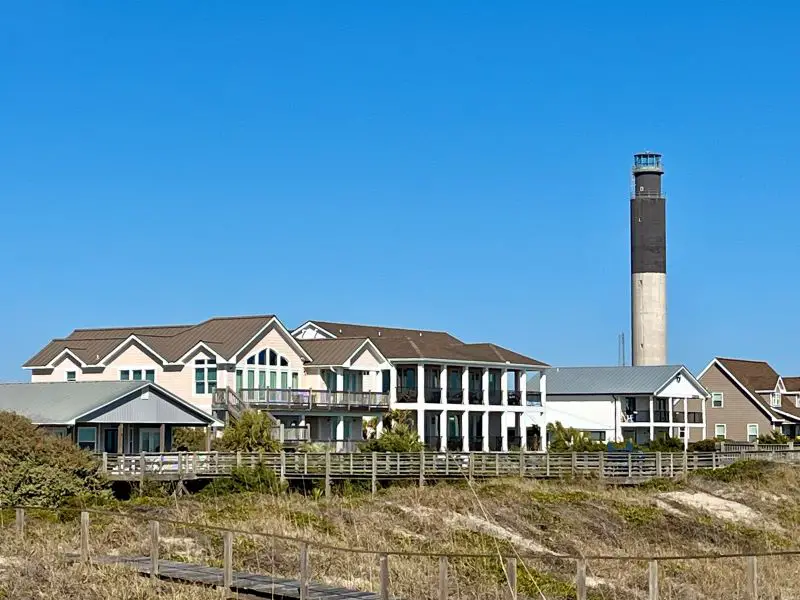Click here to get this post in PDF

As climate change accelerates, coastal regions are becoming more vulnerable to rising sea levels, storm surges, and extreme weather events. These environmental shifts present unique challenges for architects and real estate developers tasked with building in these sensitive areas.
Leading the charge in tackling these issues is Samer Samarani, an architecture and real estate developer with unparalleled experience, who has made sustainability and resiliency the core strategies of his coastal projects.
Samarani’s work on the resilient real estate development applies an innovative approach in enhancing coastal area sustainability in the future.
The Importance of Resilient Development in Coastal Regions
Coastal regions have long been desirable locations for real estate development, attracting investors, businesses, and residents with their natural beauty and access to waterfront views. However, as sea levels rise and extreme weather events increase, these areas become high-risk zones for flooding, erosion, and infrastructure damage. Traditional building methods are no longer sufficient to address these challenges.
He recognizes that the future of real estate development in coastal regions requires a radical shift in thinking. He articulates his philosophy:
“In coastal development, we need to work with nature, not against it. Our designs must be adaptable, sustainable, and resilient. By integrating cutting-edge technology, sustainable materials, and forward-thinking strategies, we can create structures that don’t just withstand environmental stressors – they thrive in them. This approach is not just about building; it’s about reimagining how we live in harmony with our coastal environments.
“Building in coastal regions requires a deep understanding of the environment and the challenges it presents,” says Samarani. “Resiliency is about more than just survival—it’s about creating spaces that continue to function and provide value, even as conditions change.”
Designing for Resiliency: Adapting to Environmental Risks
Image copyright: Samar Samarani
One key aspect of Samarani’s approach to coastal development is designing with resiliency in mind from the very beginning. This starts with a comprehensive site analysis, including its elevation, proximity to water, and vulnerability to natural disasters like hurricanes, floods, and storm surges.
He uses this data to inform every aspect of the project, from the building’s orientation to its foundation design.
He uses elevated foundations and reinforcements in flood-prone areas to protect buildings from floodwaters. Some designs even incorporate amphibious features, allowing structures to float during floods and return to position afterwards.
“We need to build with the understanding that water is no longer a distant threat—it’s a reality we must accommodate,” he explains. “By designing buildings that adapt to changing water levels, we create resilient structures better equipped to face the future.”
This innovative approach has not gone unnoticed. His work on the Amchit Beach House in Lebanon, which won the Best Architectural Single Residence Arabia in 2013, demonstrates his ability to create striking, sustainable designs that harmonize with coastal environments.
Similarly, his contribution to the West Kuwait Mega Complex, awarded Best Office Architecture Kuwait in 2013, showcases his expertise in large-scale sustainable developments in coastal regions.
John Pelletier, a Senior Project Manager at Tishman Speyer, attests to Samarani’s innovative approach: “Samer has a strong design background. His technical knowledge during drawing reviews is very beneficial. He will call out errors and improve design documents during his reviews. Also, he is a skilled renderer who can portray images of buildings and spaces prior to construction. These rendering skills help us get projects approved by showing clients future spaces.”
Sustainable Building Materials and Green Technologies
Sustainability forms the cornerstone of Samarani’s coastal developments. Recognizing the fragility of coastal ecosystems, he designs projects that minimize environmental impact while maximizing resilience. His LEED Green Associate certification, obtained in 2022, bolsters his expertise in this area and equips him with cutting-edge knowledge of sustainable building practices.
In his coastal projects, he prioritizes locally sourced, renewable materials, significantly reducing the carbon footprint associated with transportation and construction. His material choices are environmentally friendly and tailored to withstand coastal challenges such as saltwater corrosion and high winds. Recycled steel, reclaimed wood, and low-VOC finishes are staples in his designs.
Reflecting on his material selection process, Samarani explains: “In coastal development, every choice we make has long-term implications. Our materials must not only be sustainable in their production but also in their longevity and performance in harsh coastal conditions.”
His approach to green technologies is equally innovative. His designs often incorporate solar panels, wind turbines, and rainwater harvesting systems, creating energy-efficient and self-sustaining buildings. This strategy is particularly crucial in coastal areas vulnerable to power outages during extreme weather events.
Dr. Elena Vasquez, a renowned coastal geomorphologist who has collaborated with him on several projects, praises his innovative approach: “Samer’s work represents the vanguard of sustainable coastal development. His designs don’t just adapt to the coastal environment; they actively contribute to its health and resilience. The way he integrates green technologies with natural processes is truly revolutionary in our field.
Samarani’s innovative use of green technologies is exemplified in his recent work on the Coastal Eco-Resort in Kuwait. This project features a state-of-the-art desalination system powered by solar energy, providing fresh water to the resort while minimizing environmental impact. The buildings are equipped with smart shading systems that automatically adjust to sun position and temperature, significantly reducing energy consumption. Additionally, he incorporated a network of green roofs and vertical gardens throughout the resort, which not only improves insulation but also helps to capture and filter rainwater, reducing runoff and supporting local biodiversity.
“Our goal is to create buildings that are not just situated in coastal environments, but are integral, sustainable parts of these ecosystems,” Samarani asserts.
This philosophy underpins his innovative use of materials and technologies, setting a new benchmark for sustainable coastal development.
Coastal Resilience: Protecting Communities and Ecosystems
Samarani, a leading expert in sustainable coastal development, creates resilient communities that safeguard both people and the environment. His innovative approach, which has earned widespread admiration, cements his status in architecture and real estate development.
Samarani’s signature strategy incorporates natural features to enhance coastal resilience. He designs natural buffers like sand dunes, wetlands, and mangroves, protecting against storm surges and erosion while supporting biodiversity. This approach blends architectural innovation with environmental stewardship.
He transformed a vulnerable coastal area into a thriving, resilient community in one of his most acclaimed projects. By restoring natural wetlands and incorporating green infrastructure throughout the development, he reduced flood risks and improved the area’s overall environmental health, providing wildlife habitats and enhancing residents’ quality of life.
Reflecting on this project, he explains: “Nature is our greatest ally in building resilient communities. By working with natural systems, we can protect coastal areas from environmental threats while preserving these spaces’ beauty and functionality.”
Alphonse Kai, Principal Architect at Al Jazera Consultants International who mentored Samarani, attests to his innovative problem-solving skills: “Samer’s approach to coastal resilience is truly groundbreaking. His ability to envision solutions that benefit both human communities and natural ecosystems demonstrates why he’s so highly regarded in our field.”
Samarani’s expertise in coastal resilience is enhanced by his studies in Landscape Architecture, which complement his Master’s degree. This multidisciplinary background provides a comprehensive perspective on coastal development, earning him peer respect.
Pamela Janji, Head of the Architecture Department at USEK and a long-time colleague, emphasizes Samarani’s impact: “Samer’s work in coastal resilience has set new standards in our industry. His projects win awards and serve as case studies for sustainable coastal development worldwide.”
Samarani’s commitment to coastal resilience extends to his advocacy work. As a board member of the Rose Kennedy Greenway Business Improvement District in Boston, he influences policies promoting sustainable urban development in coastal areas, further solidifying his reputation as a thought leader.
Through his innovative approach to coastal resilience, Samer Samarani continues to push the boundaries of sustainable development, earning accolades and respect from colleagues and shaping the future of coastal communities worldwide.
The Future of Coastal Real Estate Development
Samer Samarani is optimistic about the future of coastal real estate development. As climate change continues to reshape our world, the need for resilient, sustainable architecture will only grow. Samarani believes that by embracing innovative design strategies and sustainable practices, we can create coastal communities that survive and thrive in the face of environmental challenges.
“The future of coastal development lies in our ability to adapt,” says Samarani. “We have the technology and the knowledge to build in sustainable and resilient ways, and it’s our responsibility as architects and developers to lead the way.”
Samarani is already working on several new projects that push the boundaries of coastal resiliency, including floating communities, hurricane-resistant housing, and zero-energy developments.
His forward-thinking approach sets the standard for how the real estate industry can respond to the challenges of climate change while creating lasting value for both people and the planet.
Conclusion
As a registered architect and real estate development specialist, Samarani’s contributions to coastal resilience have made him one of the industry’s most recognized authorities.
His strategy of integrating sustainable materials, green technologies, and resilient design principles outlines how effectively inhabited areas in threatened coastal zones can be built securely. Reflecting on this approach,
Samarani says: “In coastal development, we’re not just building structures; we’re crafting a sustainable future. By harmonizing cutting-edge technology with nature’s wisdom, we can create resilient communities that withstand environmental challenges and thrive in harmony with their surroundings. This is the essence of true coastal resilience.”
You may also like:
How Marine Engineers Are Developing Environmental Sustainability in Ship Design and Operations
Image source: envato.elements.com
Image source: Samar Samarani

